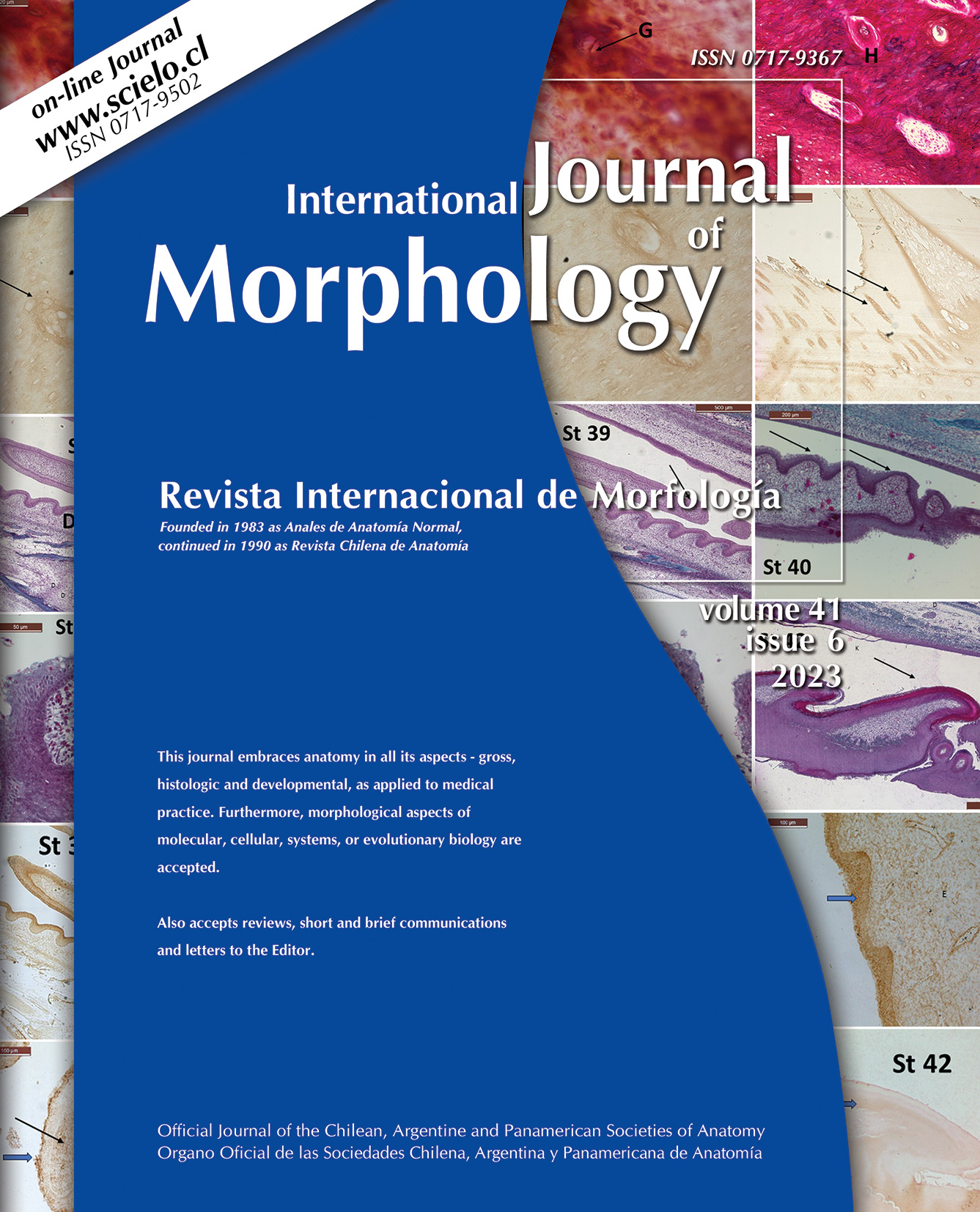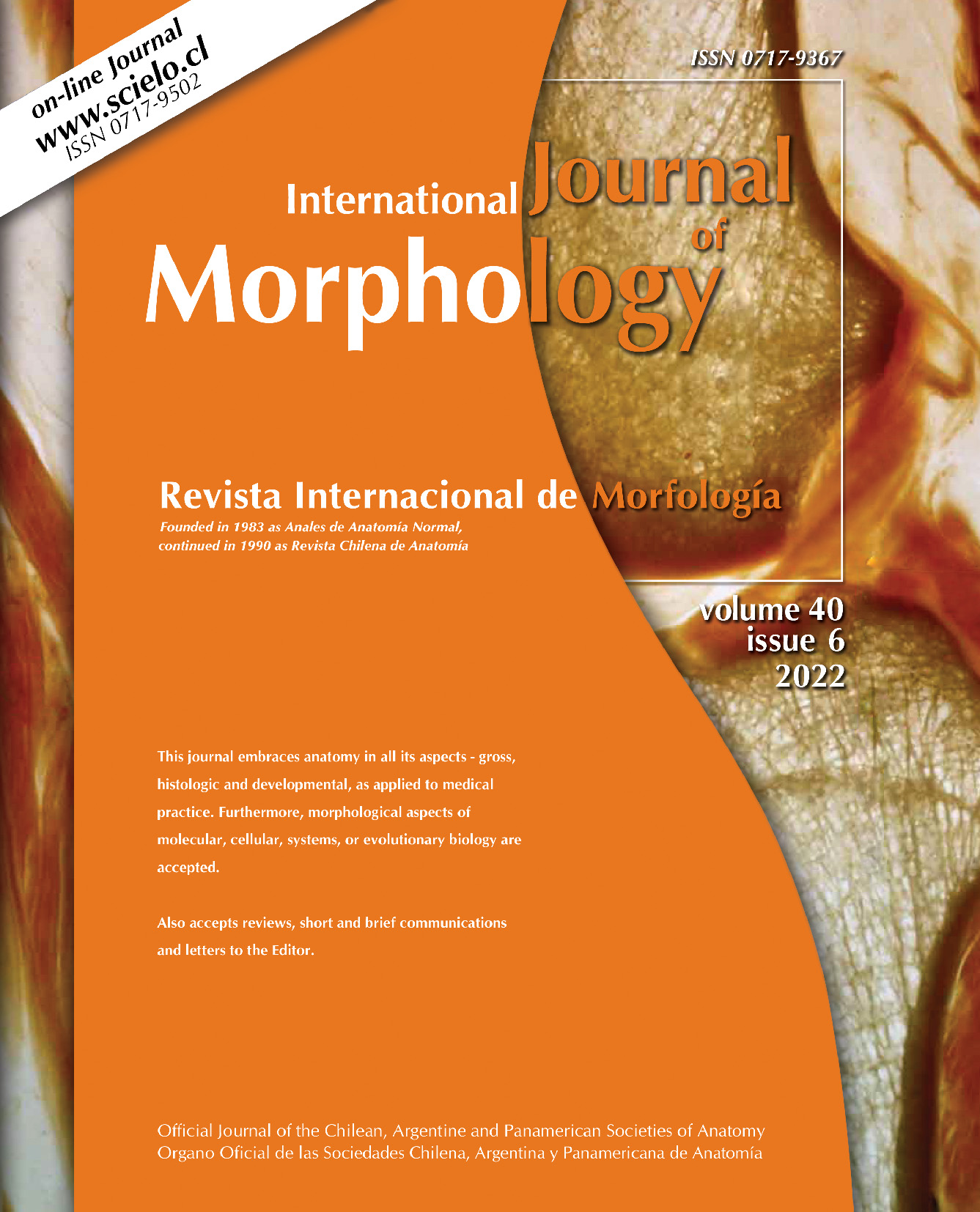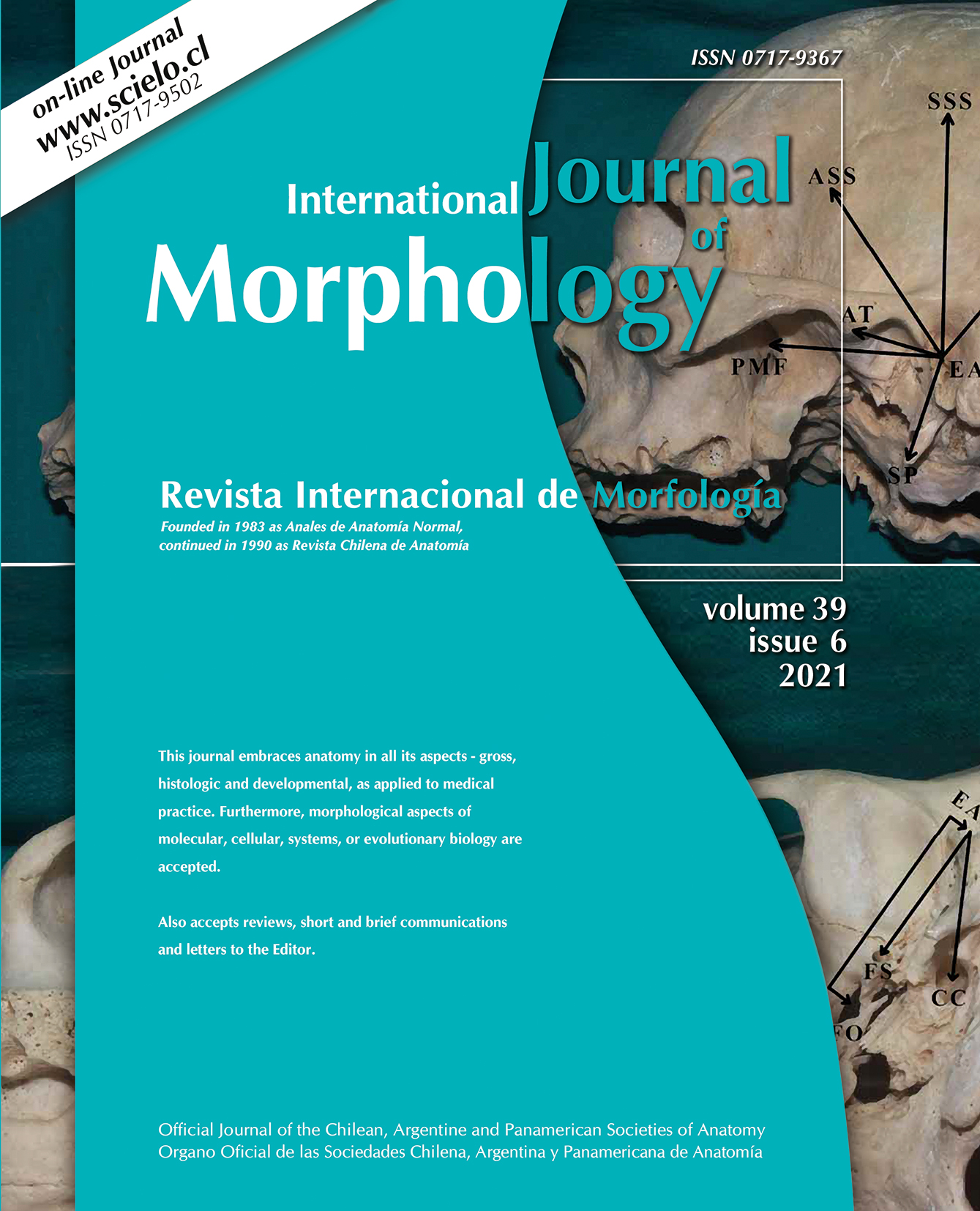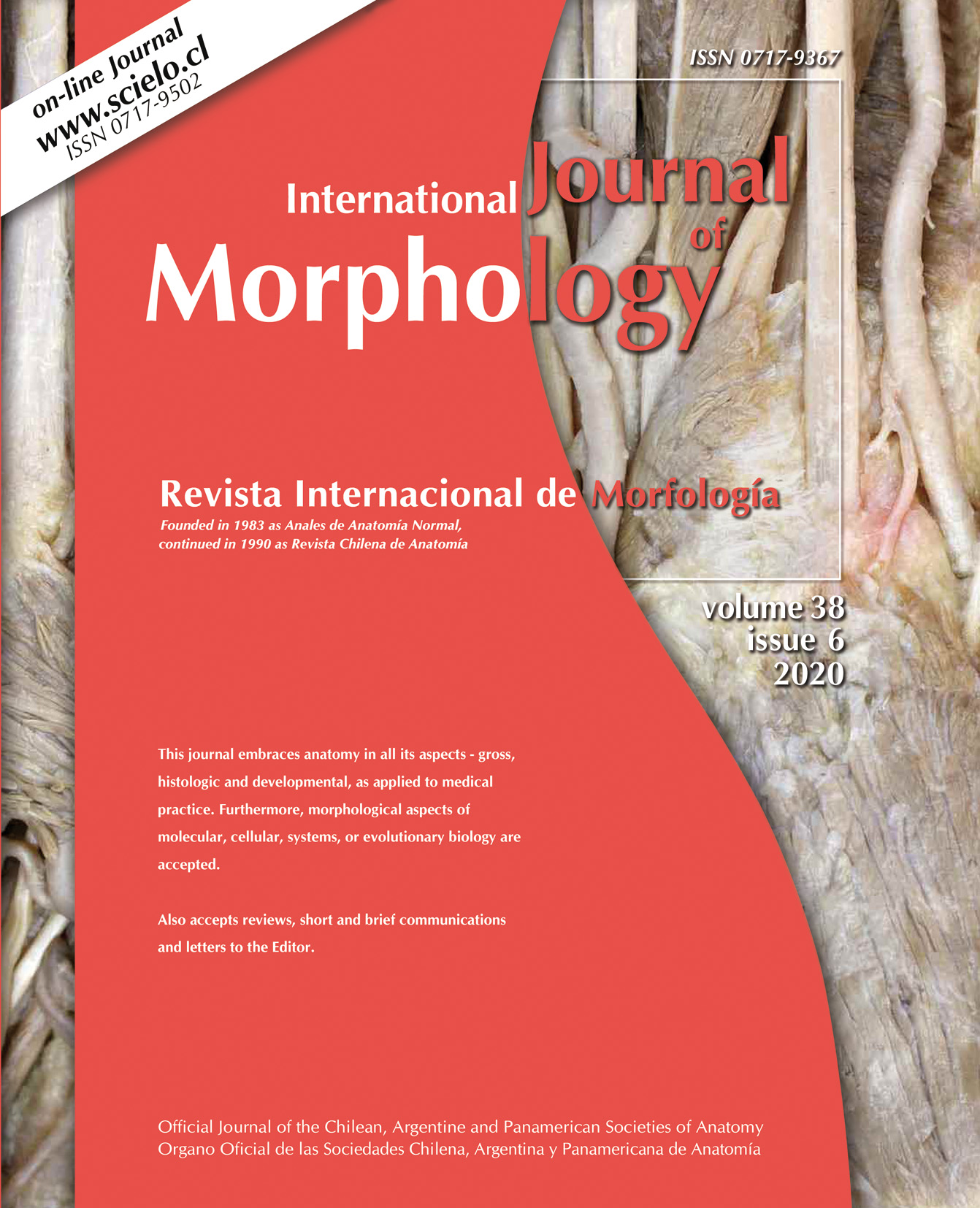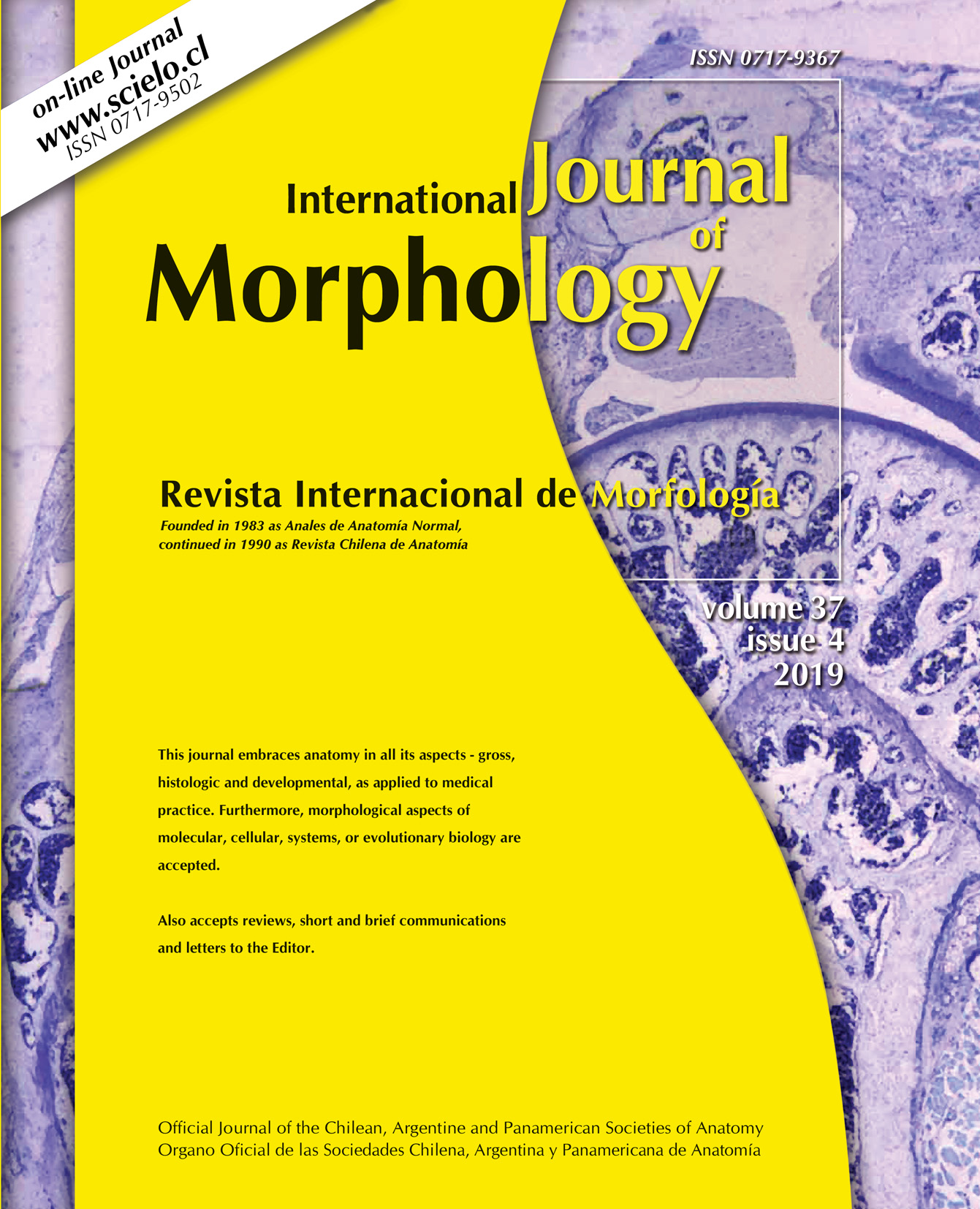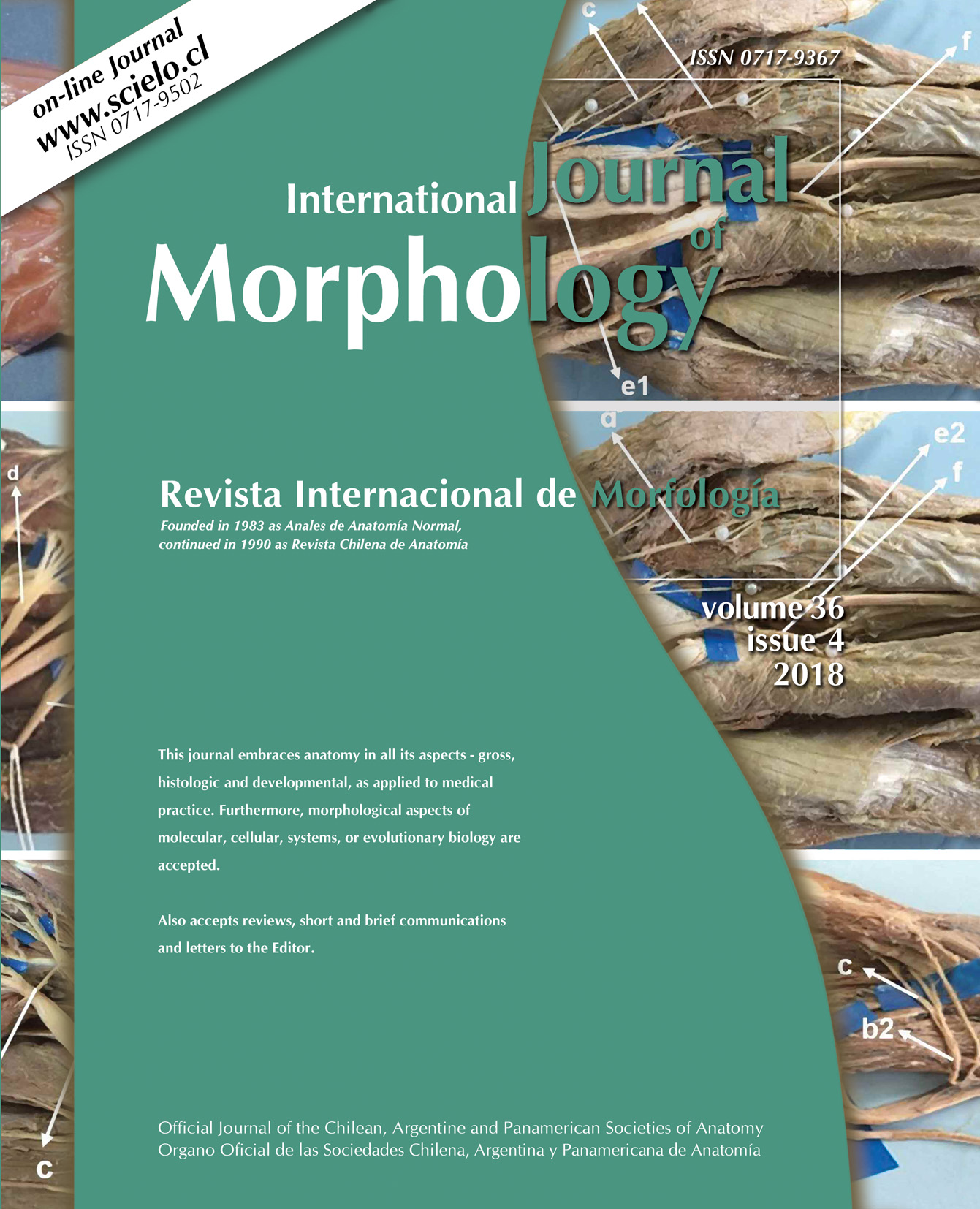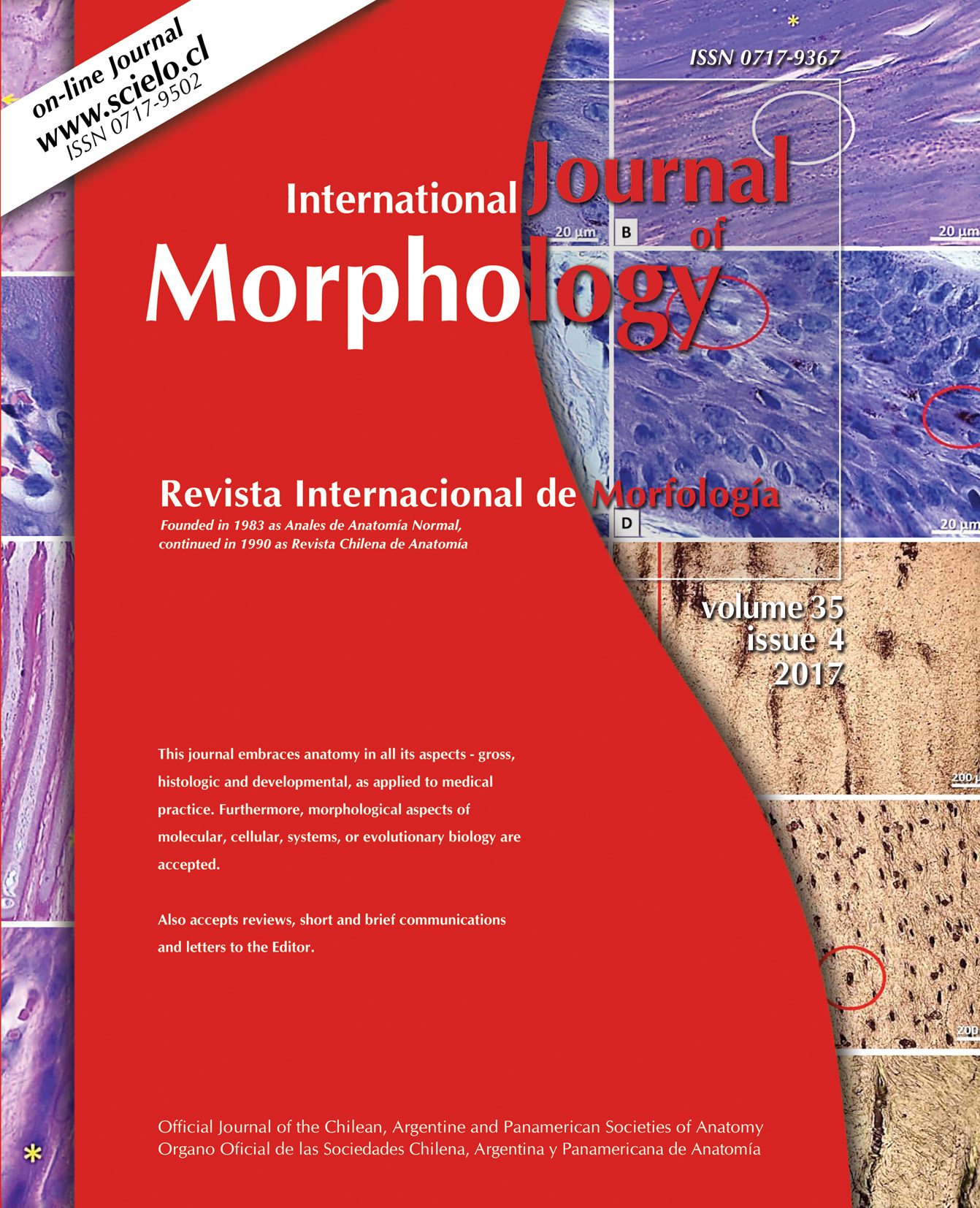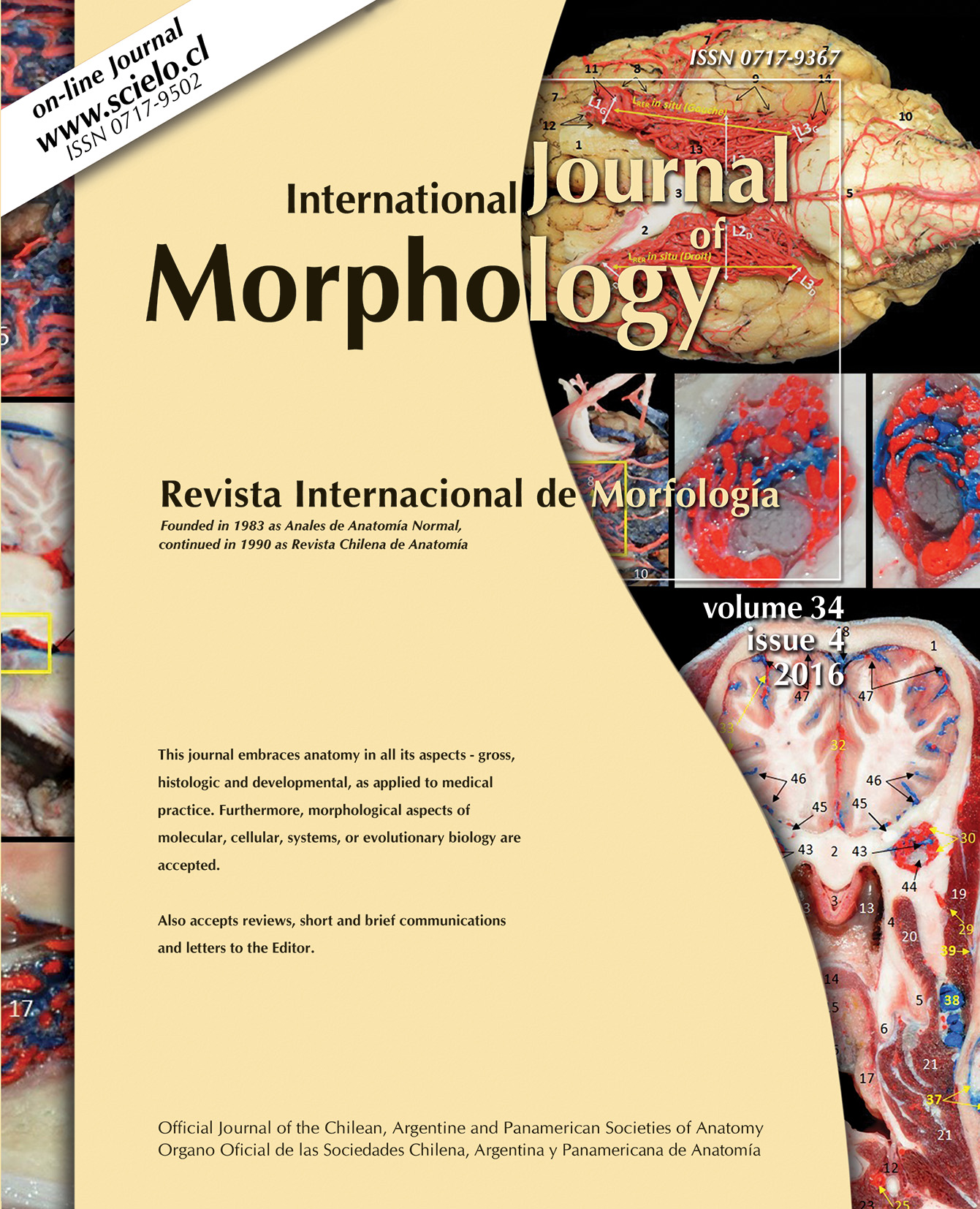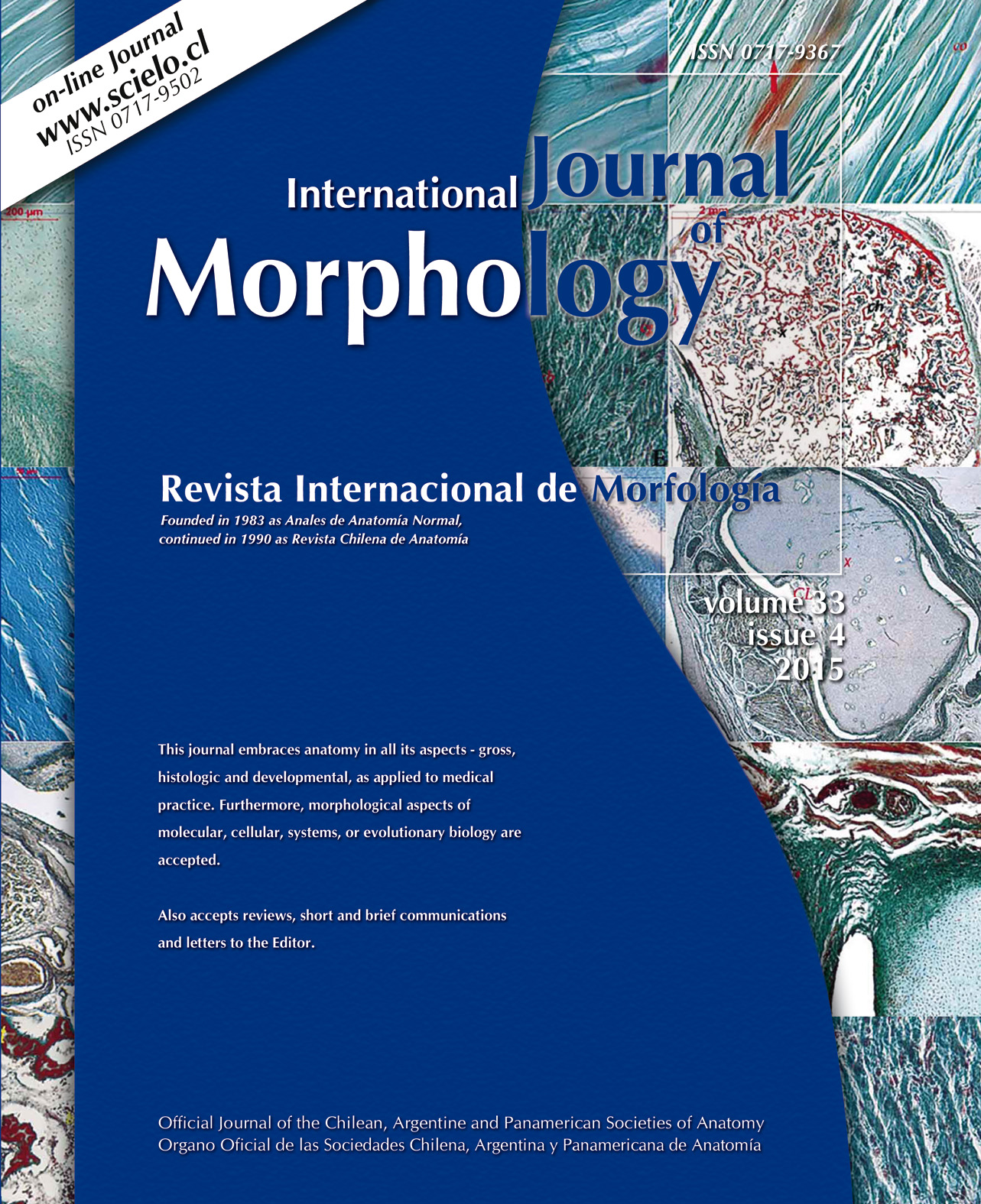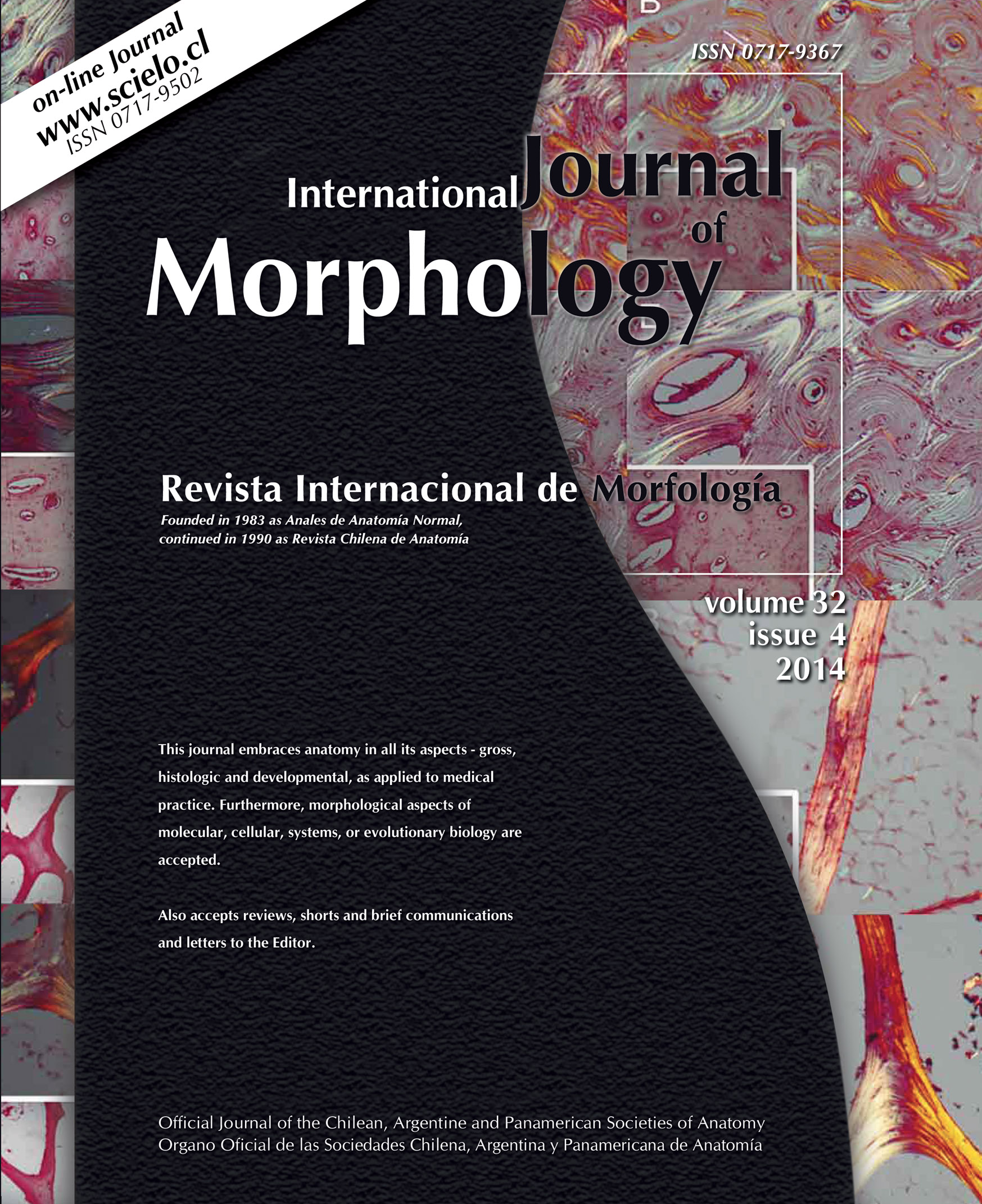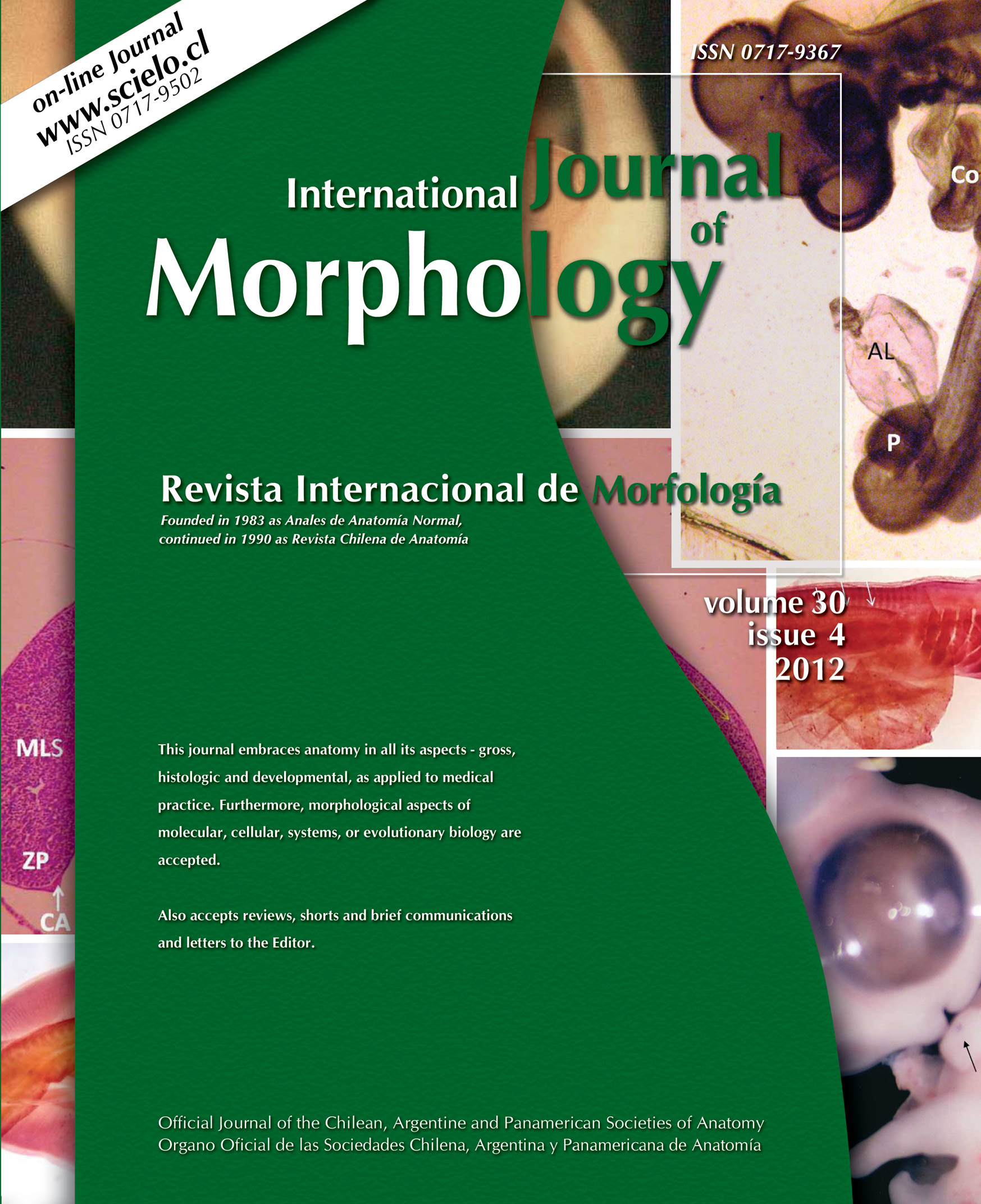Axial and Sciatic Arteries: A New Interpretation
DOI :
Waseem Al Talalwah & Roger Soames
Summary
In an investigation of 92 female and 79 male cadavers persistent sciatic and axial arteries were identified and classified based on their origin and location. Sciatic arteries were observed to arise from a number of different arteries in 68 specimens: anterior trunk of the internal iliac artery (12 specimen); internal pudendal artery (1 specimen); posterior trunk of the internal iliac artery (44 specimens); anterior and posterior trunks as a double artery (4 specimens); superior gluteal artery (7 specimens). In addition, the sciatic arteries were observed to give the superior and inferior gluteal arteries (12 and 9 specimens respectively). It is of note that a persistent sciatic artery was observed to give the superior or inferior gluteal artery rather than the superior or inferior gluteal artery giving the persistent sciatic artery: a persistent sciatic artery was also observed to exist with the superior or inferior gluteal artery. This questions the general embryological origin of a persistent sciatic artery. The embryological origin of the proximal part of the axial artery and whether it forms the superior or inferior gluteal artery is discussed, together with the general arrangement of the internal iliac and femoral arterial systems. Presentation of the sciatic artery is also discussed with respect to existing embryological theories and from a new perspective. A number of embryological vascular anomalies are also discussed.
KEY WORDS: Axial theory; Sciatic theory; Superior gluteal; Inferior gluteal; Internal iliac; External iliac; Superficial femoral; Deep femora; Common femoral; Internal pudendal.
How to cite this article
AL TALALWAH, W. & SOAMES, R. Axial and sciatic arteries: a new interpretation. Int. J. Morphol, 40(2):495-506, 2022.












